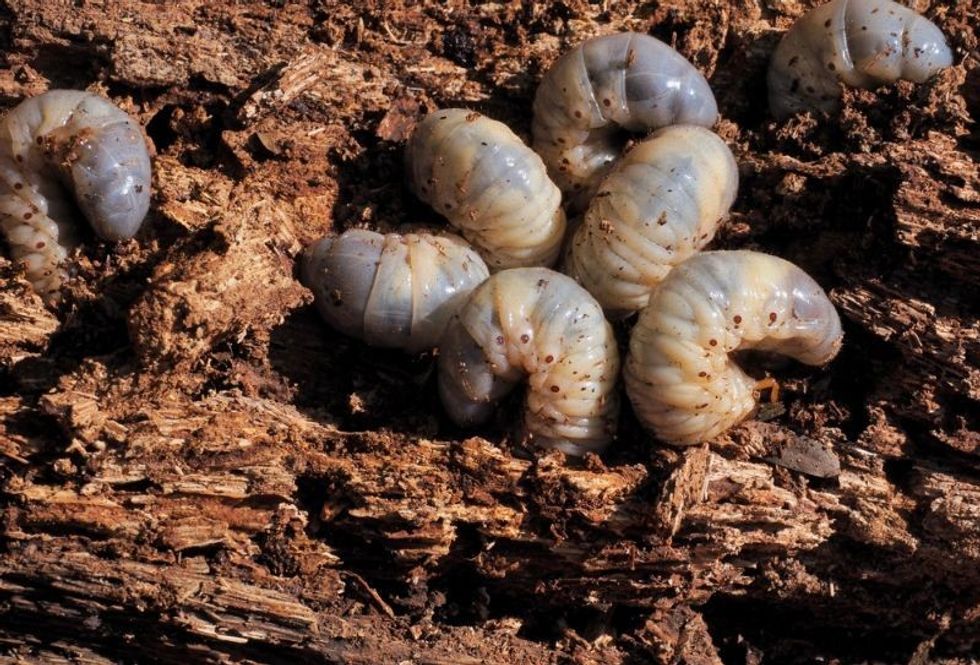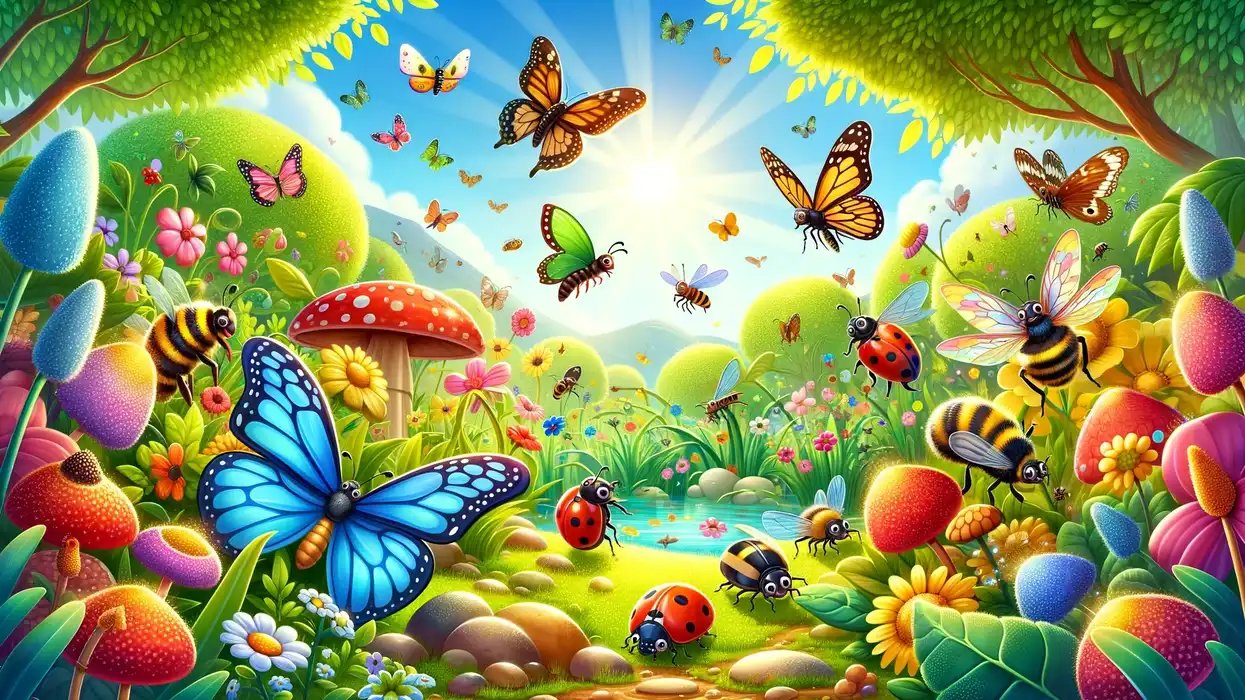The life cycle of insects goes from egg to adult, and this process is called metamorphosis.
Metamorphosis is classified under two groups: gradual and complete. Gradual metamorphosis further has three stages: egg, nymph, and adult.
In the nymph stage, the insect looks identical to an adult except for the size and absence of wings, if it's a winged insect, like stink bugs, grasshoppers, and cockroaches. A huge number of insects, around 85%, go through complete metamorphosis.
The life cycle of holometabolous insects (which undergo the process of complete metamorphosis) has four distinct stages: egg, larva, pupa, and adult. This can include, for example, bees, ants, beetles, butterflies, flies, and caddisflies.
Larvae are very adaptive to their surroundings, but they should be kept safe from predators. In the larval stage, the species consumes more food to grow into their adult stage.
Some larvae are dependent on adults for food. In the eusocial Hymenoptera species, female workers feed larvae more than male workers do; males are relatively inefficient, using lots of time and actually feeding less food.
If you enjoy reading this article and want to learn more about insect larvae, then check out dragonfly larvae and ladybug larvae.
Types Of Insect Larvae
Amidst insects, only the Endopterygota shows complete, radical metamorphosis, with a unique larval stage.
There are four main types of Endopterygotes:
Insect larvae have no legs at all and are poorly sclerotized. Based on their sclerotization, there are three apodous subgroups: the Eucephalous with a well-sclerotized head capsule, the Hemicephalus with a decreased head capsule that's retractable between the thorax, and the Acephalus with no head capsule.
This type of larva has different subtypes and is most unlike a common insect form. It hatches from eggs that hold very little yolk. Polypod larvae (eruciform larvae) look like a caterpillar and are primarily caterpillars. They have a cylindrical body with a well-developed head capsule and short antennae. They have both thoracic legs and abdominal prolegs.
Insect larvae are well developed with head capsules and structured mouthparts, which are similar to the adult, except for compound eyes. A larva has six legs and no abdominal prolegs. It is classified into two subgroups.
The first subgroup is the Campodeiform. It's usually predatory and is generally quite active. It has an elongated body but is moderately flattened, with well-developed body parts such as legs, antennae, and cerci. Its mouthparts are used to hunt prey.
The second subgroup is the Scarabeiform. Insect larvae are called grub. The larva is curved or shaped like the letter C, is rarely hairy, and has a well-developed head capsule. It has thoracic legs but doesn't have abdominal prolegs. Grubs are slow and sluggish.
Larvae Identification
Larvae are at a young phase of an insect's life, from hatching to growing into a pupal and then into an adult.
In larval forms of the insect, growth is immature and doesn't resemble the adult form. They have distinctive features that are not found in the adult stage, which makes it challenging to identify the insect as a larva. University research and science have made some observations on the larval form appearance to help identify the insect.
- Caterpillar - the larval stage of the butterfly and the moth. A caterpillar has many pairs of legs. It has segmented thoracic legs with fleshy prolegs on the abdomen, chewing mouthparts, and distinct coloration.
- Larval beings having pairs of fleshy legs on all abdominal segments are sawflies.
- Larvae having segmented thoracic legs but no fleshy prolegs belong to many species of beetles.
- Larvae having relatively long thoracic legs and pointed bodies are active predators and crawlers with flat heads and distinct front-pointing jaws, like the lady beetle, the ground beetle, and the lacewing.
- A larva with short, thicker thoracic legs, a box-shaped head, a wider abdomen, and a white body forms a white grub, like the leaf beetle and the rootworm.
- Larval beings with no segmented thoracic legs or distinct heads are weevil grubs, midge larvae, mosquito larvae, drain fly larvae, and soldier fly larvae.
- Some do not have distinctly visible heads, or the head is hidden in the thorax completely like fly maggots, aphid predator maggots, and rat-tailed maggots.
- Fly larvae are usually insect larvae in water.
Insect Larvae Stages

Larval forms and types of larvae are called caterpillars, grubs, maggots, and nymphs.
In larval form, the insect feeds and grows. It eats a lot of food to fuel its transition to its adult form. Caterpillar and moth larvae eat plants; they obtain the water needed from plants. Some larvae eat manure, carrion, food waste, and compost. Some larvae depend on adults to feed them and some are mobile.
Each stage is distinguished from the next stage by a molt. Molts occur many times before the adult stage. It’s a complicated process involving gradual and complete growth. Molting is a behavior of insects; an insect routinely sheds off its exoskeleton and forms a new, hard exoskeleton. After successful molts, it reaches the pupal stage or adulthood.
How do you get rid of insect larvae?
University science departments and other research state insects larvae are competitors for food, fiber, and various natural resources.
They exploit agricultural food products by eating leaves of crop plants; sucking away plant juices; boring within leaves, stems, or roots; and spreading plant pathogens. They destroy wooden building materials, ruin stored grain, and accelerate the process of decay. They also affect the health of humans and domestic animals with bites and stings, and by spreading disease.
Use the right soil for your plants, ensure proper sunlight and watering, use appropriate organic fertilization and prune when needed. Barriers and repellents act like a wall to prevent insects and crawlies from entering your garden and home.
Plants like peppermint, spearmint, and royal pennies work as barriers to stop insects' larvae. Beneficial insects like wasps, praying mantis, and lady beetles will prey on larvae. Cover your trash and avoid water stagnation.
Pest control methods include using insecticidal soaps and oils which are most effective on soft-bodied, immature larval stages or eggs. These must be sprayed on them; they're not effective when dry.
Horticultural oil is mixed with water and sprayed on plants to kill insect larvae and insect adults. People also apply household chemical solutions as alternative insecticides like dish soap, shampoo, apple cider vinegar, cinnamon oil, and olive oil.
Here at Kidadl, we have carefully created lots of interesting family-friendly facts for everyone to enjoy! If you liked our suggestions for insect larvae, then take a look at cockroach larvae or earwig facts









